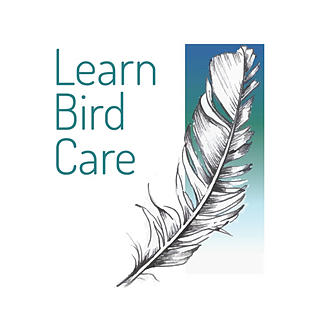How to treat lead toxicity in birds
- Learn Bird Care
- Oct 21, 2020
- 4 min read
Lead toxicity is a common cause of illness in raptors internationally such as hawks, harriers, eagles and vultures. In New Zealand, it is most commonly seen in Australasian harriers, kea, kaka and ducks. However, lead toxicity can occur in many other species, including companion birds and waterbirds.
Birds usually become poisoned by consuming lead – the source can be from buildings or the environment. In NZ the most common source is still from hunting birds (such as ducks) with lead shot or lead contamination in the environment (e.g. fishing sinkers), although lead paint and lead fixings and nails are also known sources for wild parrots. Ducks that have been shot and die in the environment can be consumed by raptors with accidental lead ingestion. Poisoning from being shot is also possible, though it is usually ingestion that leads to chronic illness, as the lead is absorbed into the bloodstream and becomes deposited in body tissues such as bone.

Raptors presenting with lead toxicity may be thin, with poor general condition and varying degrees of paralysis. The common syndrome in NZ harriers is termed “clench claw” paralysis. They will be unable to stand fully upright, with claws clenched tightly shut (do not attempt to open them!) and they may sit back on their hocks, causing soft tissue injuries due to pressure. Other clinical signs in birds could include vomiting, depression, reduced activity, inability to fly and reduced appetite. They may have bright green stained faeces or diarrhoea. Severe cases may have seizures (fits).
Read this excellent article by Jenny McLelland on lead toxicity in NZ harriers if you wish to know more!
The sooner that lead toxicity is diagnosed, the better the chances of recovery with appropriate treatment. Lead toxicity can be diagnosed readily by a blood lead test. Your veterinarian can take a sample and send to a lab or use an in-house blood lead kit. The lab may have some suggested reference ranges, or species specific references may be found in the literature or text books - however in general anything 0.1mg/l (10mg/dL) or above should be a cause of concern and treatment should aim to reduce to 0.05mg/l or less.
Another diagnostic tool is an x-ray to try and see if any lead fragments are visible in the stomach (which will show up bright white on x-ray). A diagnosis of high blood lead will mean treatment should be initiated immediately, with the hope that signs may resolve within 1-2 weeks or more. It is not appropriate to try to rehabilitate any birds with lead toxicity without specific diagnosis and treatment, as this will only prolong suffering and have little to no chance of resolution. Unfortunately, in many cases paralysis will not resolve (even with treatment) and the bird must be humanely euthanised as they will never have a chance to hunt again.

Treatment consists of a chelation compound (preferably Ca EDTA if available) to bind lead and excrete it from the system and needs intensive veterinary hospitalisation and fluid therapy to ensure that the kidneys are protected. Although Ca EDTA has become unavailable in some countries, there are still some supplies at individual wildlife hospitals, and it can be compounded specially if required. Contact local experienced wildlife practitioners or wildlife hospitals for further information relevant to your country. Bandaging helps to protect the feet and legs from pressure sores and must be changed regularly or as soon as damp/ wet.
Another possible concurrent treatment, if lead fragments are found in the stomach, is binding with a sticky compound such as Metamucil (psyllium husk) which can be tube fed (in small doses!) to the bird. Keep a close eye on the faecal output and ensure the bird is well hydrated with either of these therapies. This must be done under veterinary supervision as incorrect amounts could cause gut problems or worse.
In short, lead toxicity is a serious disease. It does need veterinary assessment and a minimum of a week to many weeks of treatment if there is much hope for resolution. Once the lead levels are found to be back in a normal range, these birds will often need longer-term rehabilitation with a wildlife rehabilitator to ensure they are fit and healthy before being released to the wild. This part of the process is just as crucial as the veterinary treatment and is integral to their release.
References
Gelis, S. (2008) Evaluating and Treating the Gastrointestinal System. In: Clinical Avian Medicine, Harrison G.J. and Lightfoot T.L. (Eds.). Publisher: Clinical Avian Medicine (www.clinicalavianmedicine.com/). Internet Publisher: International Veterinary Information Service, Ithaca NY (www.ivis.org).
Mclelland, J.,Gartrell, B., Morgan, K., Roe, W. & C. Johnson. (2011). The role of lead in a syndrome of clenched claw paralysis and leg paresis in Swamp Harriers (Circus Approximans). Journal of wildlife diseases. 47. 907-16. 10.7589/0090-3558-47.4.907.
Would you like to learn more about rescue, first aid and initial care? Wild Bird Rescue 101 covers all these areas so you have the tools and knowledge to help birds in need.
Would you like to know how to rescue and raise baby birds up to the point of release? Then Baby Bird Rescue & Care is the course for you!
Learn Bird Care Ltd offers free and paid online training courses for the rescue and rehabilitation of wild birds: https://www.learnbirdcare.com/ . To stay in touch and find out about new blog posts and courses as they are released, register for our free newsletter today and you will also receive our ' Basic Bird Rescue and Initial Care' booklet!


